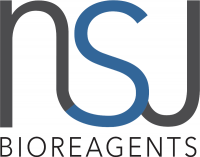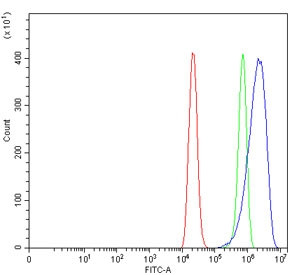Cookie preferences
This website uses cookies, which are necessary for the technical operation of the website and are always set. Other cookies, which increase the comfort when using this website, are used for direct advertising or to facilitate interaction with other websites and social networks, are only set with your consent.
Configuration
Technically required
These cookies are necessary for the basic functions of the shop.
"Allow all cookies" cookie
"Decline all cookies" cookie
CSRF token
Cookie preferences
Currency change
Customer-specific caching
FACT-Finder tracking
Individual prices
Selected shop
Session
Comfort functions
These cookies are used to make the shopping experience even more appealing, for example for the recognition of the visitor.
Note
Show the facebook fanpage in the right blod sidebar
Statistics & Tracking
Affiliate program
Conversion and usertracking via Google Tag Manager
Track device being used
| Item number | Size | Datasheet | Manual | SDS | Delivery time | Quantity | Price |
|---|---|---|---|---|---|---|---|
| NSJ-RQ6967 | 100 µg | - | - |
3 - 10 business days* |
755.00€
|
If you have any questions, please use our Contact Form.
You can also order by e-mail: info@biomol.com
Larger quantity required? Request bulk
You can also order by e-mail: info@biomol.com
Larger quantity required? Request bulk
0.5mg/ml if reconstituted with 0.2ml sterile DI water. Transient receptor potential cation... more
Product information "Anti-TRPM2 / EREG1"
0.5mg/ml if reconstituted with 0.2ml sterile DI water. Transient receptor potential cation channel subfamily M member 2 (TRPM2), also known as Estrogen-responsive element-associated gene 1 (EREG1), is a protein that in humans is encoded by the TRPM2 gene. Using a cosmid/BAC contig, this gene is mapped to chromosome 21q22.3. The protein encoded by this gene is a calcium-permeable cation channel that is regulated by free intracellular ADP-ribose. The encoded protein is activated by oxidative stress and confers susceptibility to cell death. Several alternatively spliced transcript variants of this gene have been described, but their full-length nature is not known. Protein function: [Isoform 1]: Nonselective, voltage-independent cation channel that mediates Na(+) and Ca(2+) influx, leading to increased cytoplasmic Ca(2+) levels (PubMed:11960981, PubMed:12594222, PubMed:11385575, PubMed:11509734, PubMed:11804595, PubMed:15561722, PubMed:16601673, PubMed:19171771, PubMed:20660597, PubMed:25620041, PubMed:27383051, PubMed:27068538, PubMed:28775320, PubMed:29745897, PubMed:30467180). Functions as ligand-gated ion channel (PubMed:19171771, PubMed:25620041, PubMed:28775320, PubMed:30467180). Binding of ADP- ribose to the cytoplasmic Nudix domain causes a conformation change, the channel is primed but still requires Ca(2+) binding to trigger channel opening (PubMed:19171771, PubMed:25620041, PubMed:28775320, PubMed:29745897, PubMed:30467180). Extracellular calcium passes through the channel and increases channel activity (PubMed:19171771). Contributes to Ca(2+) release from intracellular stores in response to ADP-ribose (PubMed:19454650). Plays a role in numerous processes that involve signaling via intracellular Ca(2+) levels (Probable). Besides, mediates the release of lysosomal Zn(2+) stores in response to reactive oxygen species, leading to increased cytosolic Zn(2+) levels (PubMed:25562606, PubMed:27068538). Activated by moderate heat (35 to 40 degrees Celsius) (PubMed:16601673). Activated by intracellular ADP- ribose, beta-NAD (NAD(+)) and similar compounds, and by oxidative stress caused by reactive oxygen or nitrogen species (PubMed:11960981, PubMed:11385575, PubMed:11509734, PubMed:11804595, PubMed:15561722, PubMed:16601673, PubMed:19171771, PubMed:25620041, PubMed:27383051, PubMed:27068538, PubMed:30467180). The precise physiological activators are under debate, the true, physiological activators may be ADP-ribose and ADP-ribose-2'-phosphate (PubMed:20650899, PubMed:25918360). Activation by ADP-ribose and beta-NAD is strongly increased by moderate heat (35 to 40 degrees Celsius) (PubMed:16601673). Likewise, reactive oxygen species lower the threshold for activation by moderate heat (37 degrees Celsius) (PubMed:22493272). Plays a role in mediating behavorial and physiological responses to moderate heat and thereby contributes to body temperature homeostasis. Plays a role in insulin secretion, a process that requires increased cytoplasmic Ca(2+) levels. Required for normal IFNG and cytokine secretion and normal innate immune immunity in response to bacterial infection. Required for normal phagocytosis and cytokine release by macrophages exposed to zymosan (in vitro). Plays a role in dendritic cell differentiation and maturation, and in dendritic cell chemotaxis via its role in regulating cytoplasmic Ca(2+) levels. Plays a role in the regulation of the reorganization of the actin cytoskeleton and filopodia formation in response to reactive oxygen species via its role in increasing cytoplasmic Ca(2+) and Zn(2+) levels (PubMed:27068538). Confers susceptibility to cell death following oxidative stress (PubMed:12594222, PubMed:25562606). [The UniProt Consortium]
| Keywords: | Anti-TrpC7, Anti-TRPM2, Anti-LTrpC2, Anti-LTrpC-2, Anti-Transient receptor potential channel 7, Anti-Transient receptor potential melastatin 2, Anti-Long transient receptor potential channel 2, Anti-Estrogen-responsive element-associated gene 1 protein, T |
| Supplier: | NSJ Bioreagents |
| Supplier-Nr: | RQ6967 |
Properties
| Application: | WB, FC, Direct ELISA |
| Antibody Type: | Polyclonal |
| Conjugate: | No |
| Host: | Rabbit |
| Species reactivity: | human, mouse, rat |
| Immunogen: | Recombinant human protein (amino acids R398-Y1503) |
| Format: | Purified |
Database Information
| KEGG ID : | K04977 | Matching products |
| UniProt ID : | O94759 | Matching products |
| Gene ID : | GeneID 7226 | Matching products |
Handling & Safety
| Storage: | +4°C |
| Shipping: | +4°C (International: +4°C) |
Caution
Our products are for laboratory research use only: Not for administration to humans!
Our products are for laboratory research use only: Not for administration to humans!
Information about the product reference will follow.
more
You will get a certificate here
Viewed





